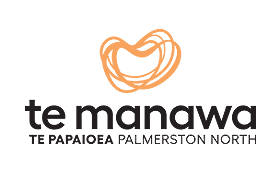On the 10th of September, 1984, the Metropolitan Museum of Art in New York opened an unprecedented exhibition, Te Māori. In part one of this two-part series, we learned how a legendary Manawatū leader, Mina McKenzie contributed to this history making exhibition. If you missed part one, feel free to go ahead and read it here.
Mina and Te Māori
With the development of new understandings about how to care for taonga, we might expect the pathway for Te Māori to have been smooth. But this was the 1980s—not everyone involved was on board with the complexity of the committee structure, or new expectations for iwi consultation. In this respect, Mina truly was the bridge.
Speaking in an interview several years later, Mina characterised her contribution to the Te Māori committee as ‘the bearer of bad news.’ When museum managers made a decision that displeased Māori , she was the messenger. Equally, iwi colleagues trusted her to pass on information that caused frustration with museums – a job Mina found interesting, challenging, and emotional. Correspondence between Mina, Te Māori’s American venues, and her committee colleagues show us a leader whose advice was well-reasoned and gratefully received. For example, in 1986 Mina defied academics and curators when she proposed a correction to a date assigned to taonga in Te Māori, based on her own research. The correction was not made, but statements like “Mina McKenzie is right” make it clear that Mina’s voice was considered an authoritative one.
She also played an important part in getting the Te Māori tour extended to the Field Museum in Chicago, which was not a part of the original tour. American colleagues wrote to Mina to thank her for letters of support and credited her with getting the necessary approvals in Aotearoa. A testament to the extent of her collegial network, Mina already knew John Terrell, the curator at the Field Museum who would be responsible for Te Māori. Mina could confidently endorse Terrell’s skills and was able build the trust needed for colleagues in Aotearoa to support the Chicago tour. She had also visited and studied the Field Museum’s collection – enough to advise those travelling to the opening on which route kaumatua should take through the galleries during the ceremony!
Other examples discovered in this precious archive box here at Te Manawa show Mina a leader who thought critically and quickly, often too fast for her hand to keep up. Handwritten notes embellish the margins of meeting minutes and typed letters are full of cursive corrections. These documents are stacked amongst letters of thanks, requests for Mina’s advice, and countless copies of agendas and minutes that communicate the mountain of work that confronted the Te Māori management committee. It took tenacity to conquer the task of touring Te Māori across the United States of America with the blessing of relevant iwi and museums, at a time when consultation was done via fax, phone, and snail mail!
Mina herself described how the sheer number of people and perspectives involved made Te Māori, at times, “a nightmare” to manage. But from it emerged new ways of thinking, new ways of understanding the taonga in our collections, and a set of role models for a new generation of museum professionals to look up to. Now in 2024, as we engage with new debates about biculturalism, we can see that what Mina and her fellow Te Māori collaborators achieved is not just an important model for the museum world, but for all Aotearoa. We should all be proud to be able to claim Mina McKenzie as a legendary Manawatū leader whose impact was global.
Beyond Te Māori
After its New York opening, Te Māori was seen by over 600,000 people across four American cities. By the time Te Māori returned to Aotearoa for its national tour (Te Hokinga Mai or ‘the return home’), there was an appetite for a new relationship between museums and Māori. Seeing taonga displayed on the world stage had elicited a sense of national pride. Some of the distrust harboured by Māori toward museums had dissipated and there was a greater willingness for people to come to museums and see what was culturally their own. And while there was certainly criticism of Te Māori – notably, that it excluded women’s work – the consensus upon its return home was that this exhibition established a new baseline for caring for and interpreting taonga Māori in museums. Lessons learned from the Te Māori experience would go on to shape Te Papa Tongarewa. Profits from the exhibition helped establish Te Māori Manaaki Taonga Trust, which continues to support the development of Māori museum professionals and the creation of new taonga.
Mina McKenzie remained on the Te Māori management committee through to the end of Te Hokinga Mai and almost immediately went on to join the Te Papa development team. Still retaining her post at Manawatū Museum, she was made President of AGMANZ and Appointed Associate Lecturer at Massey University. Her experience with Te Māori influenced her to host the International Taonga Māori Conference – bringing representatives to Aotearoa from international museums that held taonga in their collections. By 1994, she had left Manawatū Museum just as it moved into our current Te Manawa premises. She passed away suddenly in March 1997, but lives on through the Mina McKenzie scholarship, annual Mina McKenzie lecture, and as a role model for a new generation of museum professionals across Aotearoa.




